Laurie Simmons: Big Camera, Little Camera // Museum of Contemporary Art Chicago
by Natalie Hegert
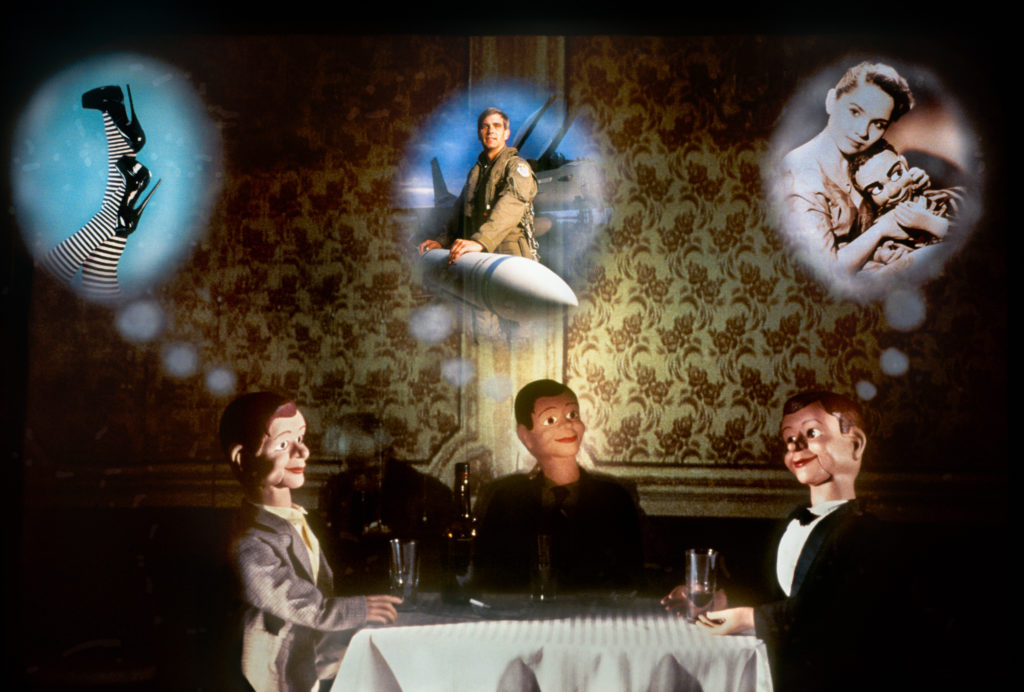
We may already think we know her, Laurie Simmons—she is part of the Pictures Generation; she did the dollhouse photographs; and we might recognize her from her performances on film. Maybe from her full-length movie, My Art (2016), but most likely from her appearance in Tiny Furniture, as the (real-life) mom of Lena Dunham. Her art is widely reproduced and very influential; she is simultaneously real and mythical. We know her, but is it really “her” that we know? Simmons’ career spans forty years, and for forty years her work has invited the viewer to speculate on surface, artifice, archetype, and appearance in American image culture.
The survey exhibition now showing at the Museum of Contemporary Art (MCA) Chicago, Laurie Simmons: Big Camera, Little Camera, had already traveled from the Modern Art Museum of Fort Worth, so Simmons was surprised that I was interviewing her by phone from my home in Texas. “I love Texas,” she gushed. It makes sense, actually. Texas serves as an archetypal stand-in for all of America in the view of the rest of the world, so it is perfect for Laurie Simmons. “Texas is a super interesting state,” she continued, citing its beauty, diversity, and “weird politics.” It is a state has always and continues to undergo change and flux, even in short periods of time, she told me—relating how everything seemed to have transformed within the brief time her exhibition was on view. When the show started, there were Beto signs everywhere and it was 95 degrees—a hot summer that pulsed briefly with the hope of the state finally turning blue. The next time she visited, it was 40 degrees and the signs were all gone.
We think we know Texas, and, by extension, America, but it has the capacity to surprise and unsettle us—just like Simmons’ work. Her photographs and films capitalize on the strangeness of what is most familiar and unveil an inherent queerness from behind the mask of conformity—inviting us to ask ourselves who we really believe we are. And in a time when that question is continually invested with new urgency, Simmons’ work finds new relevance, again and again.
Natalie Hegert: Now this will have just happened by the time this article goes to print, but in the programming notes for your MCA show, there is a description for a panel discussion, and it was basically my first question for you. It says, “Laurie Simmons has sometimes been cast as a ‘reluctant feminist.’ In this conversation, the artist brings together a panel of next generation thinkers, including her own child, to consider the tension between personal politics and the making of feminist art in a moment when gender is increasingly deconstructed.” So yeah, that!
Laurie Simmons: [laughing] What should I say about that?
NH: Perhaps it is more like multiple first questions—as someone who has been described as the “reluctant feminist,” how has your view of feminism changed over the years?
LS: Well, my view of feminism has not changed. I do not understand what it would be to not be a feminist. My reluctance to the description of “feminist artist” is based upon the fact that it is the only description of my work that is reductive and limiting. My objection to the word ‘feminism’ is that it does not have the same meaning that it did when I was young, during the second wave of feminism. I think the word is not as useful as it used to be, namely because it means so many things to so many different people. With my children and all the young people I know as my guides, I am searching for a new language, a new way to talk about some of the same ideas as well as new ideas, without feeling like a fossil using the word ‘feminism,’ or excluding people who are daunted by the word—whether they are very young people who are intimidated by it, or women of color who do not find it to be inclusive. I think that is one of the places we are now. I do not have a completely idealistic hope that we will find a common language, either in our work or our ideas, but I feel like right now we are in a moment where there is an emergence of a new kind of language that will help us communicate more effectively.
NH: What are your observations, as an artist, on this cultural flux in our understanding and apprehension of gender—from the limited, culturally imposed restraints and expectations of women in the 1950s, which informed your early photographic series, to today, when concepts of gender fluidity are becoming a mainstream topic? This is not to say that we have, as a society as a whole, entirely “progressed” in terms of gender and identification (though I am sure it is true in incremental ways) because there is still a rampant conservatism that is invested in the status quo and preserving gender roles…
LS: Somebody actually sent me an article today that was so lovely; it was about a woman who had a gender-reveal party for her twenty-two-year-old child who was transitioning from female to male. It was such a celebration and acceptance and support of her own child. The mother did all the gender reveal things—light blue balloons, light blue party favors. Where my work started in the 1970s was firmly rooted in the idea that “pink is pink” and “blue is blue,” “girl is girl” and “boy is boy.” And there is no middle ground; you are either one or the other. One can momentarily be a tomboy, which can be accepted for just so long, and then one moves into the very restrained, constrained phases of femininity—those aspects of life that I was meant to learn from my mother. I was very observant [of this] and noticed the codes everywhere. It was not as if I was particularly interested in messing with the codes; I was just an observer of the codes and their rigidity. And I was fascinated by them.
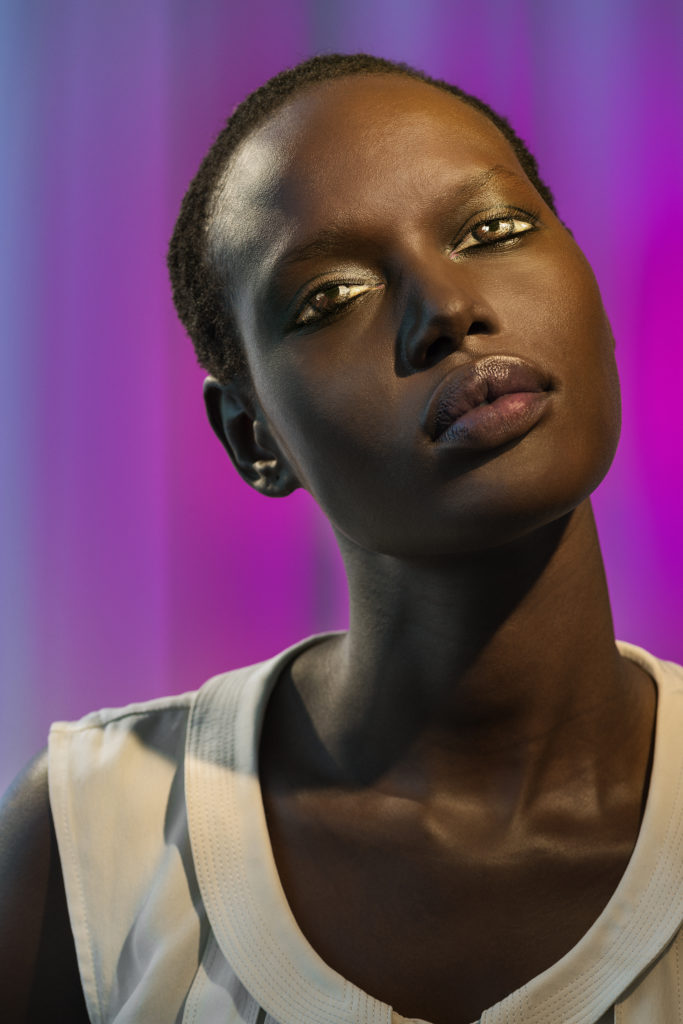
NH: Some of your works are experiencing renewed interest because of the changing conversation around women’s rights and realities—you showed the series Café of the Inner Mind (1994) again recently, which takes on new meaning in the #metoo era.
LS: Yes, when I made those works in 1994, I gave the ventriloquist dummies these kinds of lascivious thoughts. At the time, I felt like the work was not received that well, or was not understood. But when Mary Boone decided to show the works [in 2018], she had it in her mind as a #metoo statement, yet I saw it differently then too. That is one of the things that is interesting to me in having worked so long: I can re-contextualize my work to myself in whatever the current cultural climate is. I feel like that is really exciting. Probably hard to do if you are an abstract painter, but when you are dealing with images and ideas that are drawing from the current cultural moment, as I am, there are things that I make that do not work as well in the moment as they will in ten years or twenty years.
NH: Your work has been very influential, especially among a young generation of female photographers. Do you look at their work and then experience your work in a different way? How have conversations with them changed your perspective on your own work?
LS: I am not as conscious of that—who I have influenced as much as who has influenced me. Are there any that come to mind?
NH: I have seen a lot of young photographers, in MFA programs or recently graduated, and there is certainly a resurgence in contemporary photography of set-ups and scenes and studio work.
LS: I know that kind of thing changes. I remember when I started teaching at the graduate level, there were different phases—there was the Cindy Sherman meets Nan Goldin phase, a combination of drug-addled tourism and Shermanlike setups. It is interesting to see these things come and go, and to have been around as long as I have, which enables the identification of some of this stuff. I think, too, that it is probably a result of the fact that a billion people have cameras now, so people are able to capture the everyday reality of life so quickly and beautifully. I do not know what it would mean to be an artist right now; you would have to dig deep in your own interior space to find your vision. There is a surfeit of photography. It is just everywhere. And if you are an artist and you want to use a camera, how do you wade through that, what do you do? Maybe you do not do photography! [laughs]
NH: The inundation of images—
LS: Image glut.
NH: Yes. In your more recent work, like How We See (2018), The Love Doll (2009–11), and the kigurumi photographs (2014), you continue to examine manifestations of artifice, gender roles, fantasy, and desire— topics which reflect on our current societal obsession with the representation of the self via social media. Can you reflect on that a bit?
LS: The influence and ideas for my work come out of the air around me in that moment. And I feel like I have been so influenced by the internet explosion of Youtube DIY videos, and avatars, and Instagram apps for changing the way you look. All of this has fed into my own work, yet when I approach my own work there is no digital enhancement. My favorite thing is when it looks like it has been digitally done, but has been done by hand and is instead just influenced heavily by digital culture.
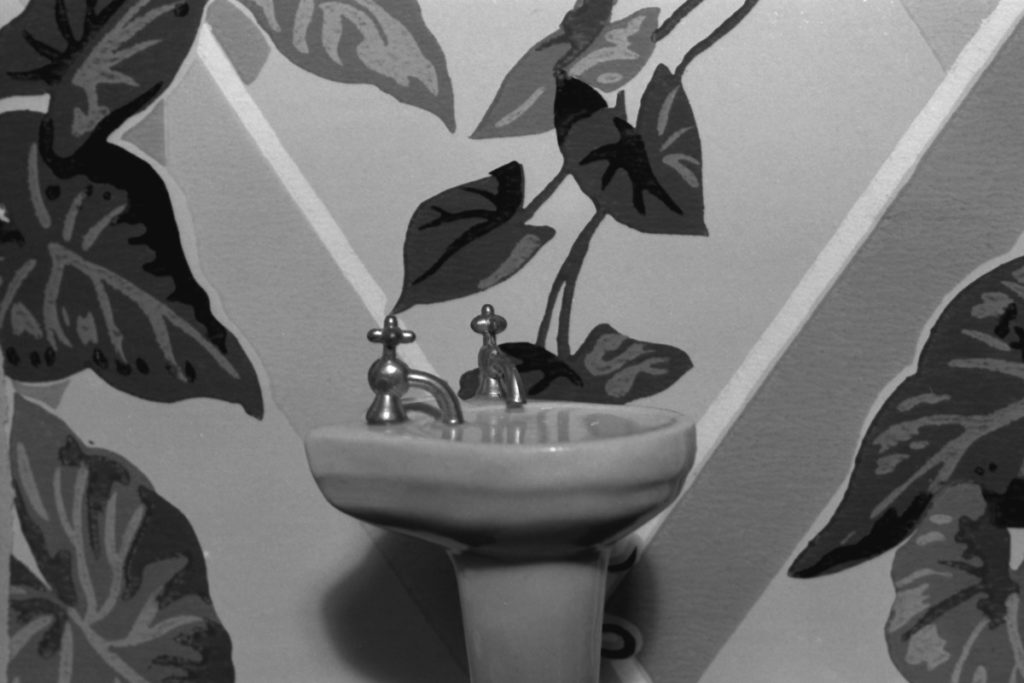
NH: What have you observed about the way social media affects us? In some ways it has allowed for connections to be made between people, especially in marginalized communities, but at the same time it reinforces gender expectations on whole new levels. I am thinking of the phenomenon of the “Instagram mom,” which adds another layer of labor to the already overwhelming job of being a mom.
LS: That has already been satirized in movies and such. In the beginning of my daughter Lena (Dunham)’s more recent show Camping (2018–present), a character is jumping on a trampoline and turning it into a slow-motion video for one of her “mom Instagrams.” It all happened so fast; everyone participates in it, but at the same time realizes how preposterous it is. I have so many thoughts about digital culture, participating in all the different platforms, and what it is doing to us as a culture. Living in New York, I have been super observant of this. I try not to talk on my phone as I am walking down the street. But there are throngs of people walking down the street just talking into thin air. People with their earbuds in, not even holding their phones. I lived in Soho in the 1980s, and if someone just fast-forwarded me thirty years and had me walking down the same street, I would not know what was going on. I would think everybody was experiencing some kind of group psychosis. Because everyone is looking straight ahead but carrying on a conversation; if you did not know what was going on, you would think they were talking to themselves. It is bizarre, and is really highlighted when you are in a big crowded city. You get snippets of conversations—in sixty seconds you can hear someone yelling at their mother, having a high-level business call, describing what they had for lunch. It is so overstimulating.
NH: How is that feeding into your work? These observations of the ways it is affecting us?
LS: This is one of the possible very cliché responses, but I think it is definitely an interruption in human interaction. I read things here and there about how young people are going to need to be taught how to interact and to make eye contact. I really believe in a kind of hyper-evolution, that we are going to evolve to be creatures—unless there is a flat-out World War III scenario, a digital war—who will not only have these devices in our hands but will probably have them in our glasses, so close to our head that we will be constantly interacting with people through this device, wherever it is implanted. And that makes a wholly different kind of interaction. Maybe we will not have to smile and frown anymore at some point, maybe we will do it all by emoji.
NH: What about issues of representation, and how people’s sense of themselves has possibly changed through this kind of interaction?
LS: Well, I think the primary way that it has changed is that we have tools to present an idealized version of ourselves. Is that healthy? Maybe we start to believe in the avatar and the idealized version of ourselves, with FaceTune and little fairies flying around our heads…it is very odd to have reality be so fluid around us. And again, I think of myself as more of an observer than a judge. I think it has affected my work, in that I have returned to a kind of human portraiture. For so long, I was looking for avatars and appropriated images, stand-ins, mannequins. But now I crave to photograph humans again—and I think it might be a result of having all of these personas thrown at me. Everybody has the ability to create these surrogates, so where does that leave me? I am back to humans.
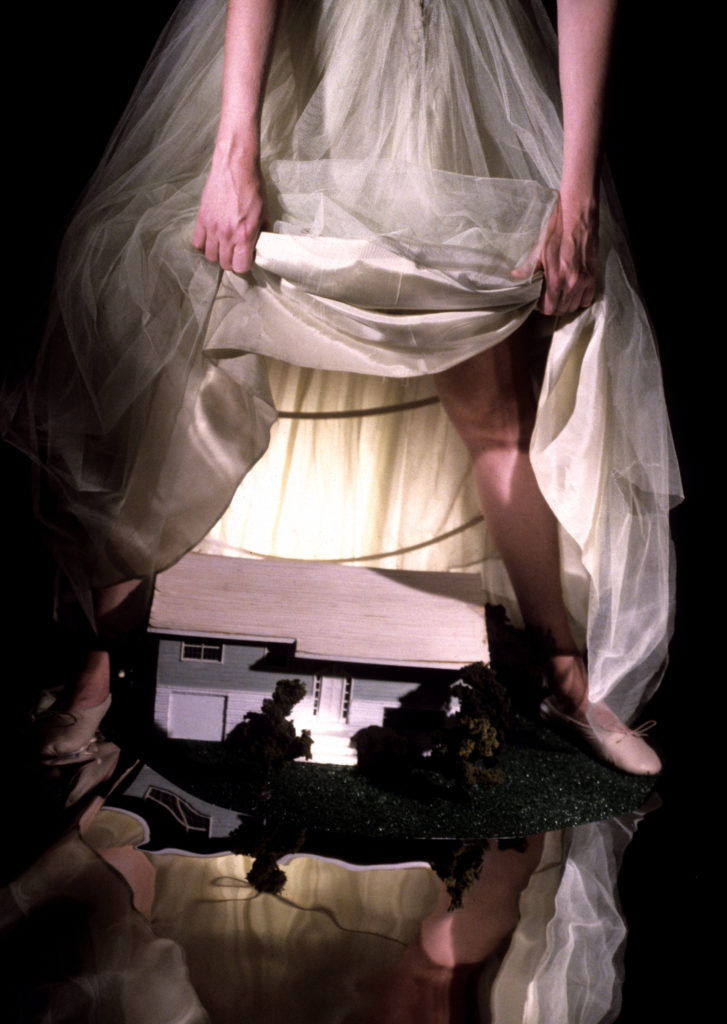
NH: I had never heard this story before now, but when you first lived in New York City as a young artist you worked as a freelance photographer for a dollhouse miniature company. That is amazing.
LS: Not for very long, because I was terrible at it. But I did my first mature artwork—I was twenty-six—while I had that job. I borrowed their sink: the title of the piece was Sink / Ivy Wallpaper (1976). I already had an interest in and was playing around with that kind of stuff, so when I saw the ad in the newspaper, I thought, well that is kind of something I could do. But really, I did not have the proper skill set. I think it is significant that I took my first [mature] photo at that time.
NH: Some of your props are on display in the exhibition. Can you tell us which ones you chose to include and why?
LS: Well, I have boxes and boxes…I do not fetishize my props at all. I take them out when I need them. They are jumbled in boxes with their names listed on the outside—they are very well organized but they are not like lined up like exhibits or anything. So, I have often dumped out my furniture, which is color coded—red, blue, green, yellow—and I decided to show it as a kind of rainbow gradient pour. I took all the furniture that I had and laid it out in a vitrine. I love it. It sort of morphed into a sculpture. It feels like more than just props; it becomes its own thing. The whole is greater than the sum of its parts, as Aristotle said.
NH: So that is a different piece than The Mess (2017).
LS: The Mess is a photograph. I had been wanting to make a picture about the environmental crisis and making a twenty-foot-long rainbow gradient picture of plastic objects seemed like a great way to address it.
NH: But both of them involve rainbow gradients. You are showing some sculptures in the show as well, which ones?
LS: In 1994, I took the dummies from my Café of the Inner Mind and six identical chairs and hung them at eye level in a sculptural series entitled Clothes Make the Man (1990–92). All the figures are identical except for the suits of clothes that they are wearing. It was my look back on the whole 1950s “universal man” look, the man in the grey flannel suit, and this idea that identity needed to be neutralized for people to fit in. Conformity was something people would strive for. And there are a couple of other sculptural elements, other props I had used in my work, like these boxes that I found at an antique show in New York, maquettes for stage design by an artist called Ardis Winckler. I interrupted the boxes with my own characters, so [in essence] I appropriated another artist’s work and used it in my work. Two of these boxes are included in the show—the dummies, and the pour of color-coded furniture. It is really exciting for me to have a sort of irreverence about my props, because I used to [not allow people to] ever see the scale of what I do! But that all seems like silliness now, because in and of themselves they are so beautiful.
NH: You also have three films on display— what decisions did you make on how to present your films for the contemporary art venue?
LS: The Geisha Song (2011) was always meant to be shown on a looped video, as it is very short. Music of Regret (2006) is a 45-minute musical, and it is playing on a loop in a gallery within the exhibition. I finally relented and realized that with the Music of Regret, which is a musical in three acts, it is okay if you come and go. There is a story, but each act has its own unique story. My Art, my most recent film, is really a movie-movie: you go, you get some popcorn, you start at the beginning, you go through to the end, hopefully you have a feeling about it, and then you leave the theatre. [Laughs] It will be shown at different times throughout the exhibition.
NH: That is interesting, you have these three different approaches to film as a visual artist all in the same show.
LS: You know I did not think of it that way, you are so right!
NH: That is how we experience film in contemporary art: a loop, an installation, or in a theatre.
LS: It is a little bit revelatory to me to think that I have maybe shown films in all these possible ways.
NH: How is it for you in working as a film director as opposed to a visual artist?
LS: Well, I feel like I am a natural collaborator, but I find that these really intense collaborations are very taxing, exhausting, and challenging, so and I feel lucky to be able to get back to a solo practice in my studio. As much as I wish I could make movies all the time, I feel like I am really lucky to have another place to go—another outlet, that does not require a crew, or anything except me and my camera, some film, and some props. I feel like my only regret—and I am known to be a regretful person—is that I did not start making movies sooner. I consider myself a young filmmaker.
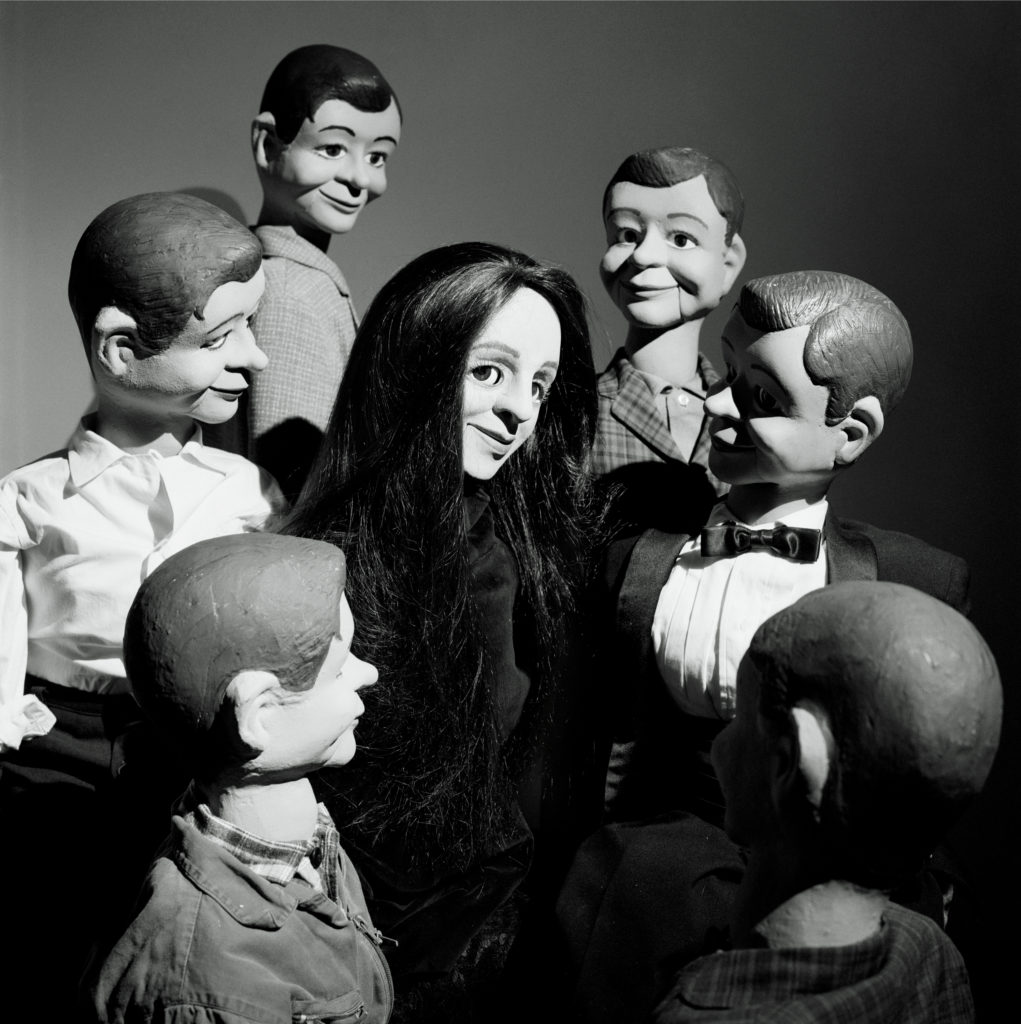
NH: Do you have plans to make another one?
LS: It has not been soon enough. It is like having a kid: you never think you are going to want another one. I have not had enough time to come down from the last film, but yeah, I cannot imagine never doing it again.
NH: My Art is autobiographical in some respects and in other ways the character is drawn from other female artists you know. What was it like playing this character off of other actors?
LS: The character is really a compilation of all the women artists that I know. She was me, and she was so many other people. On a really simple level, I wanted to portray the more banal aspects of an artist’s life. Artists are either mythologized, caricatured, overdramatized, or misrepresented on screen so often. The day-to-day routine of an artist can be very quiet, very undramatic, and that was very important to me to represent that.